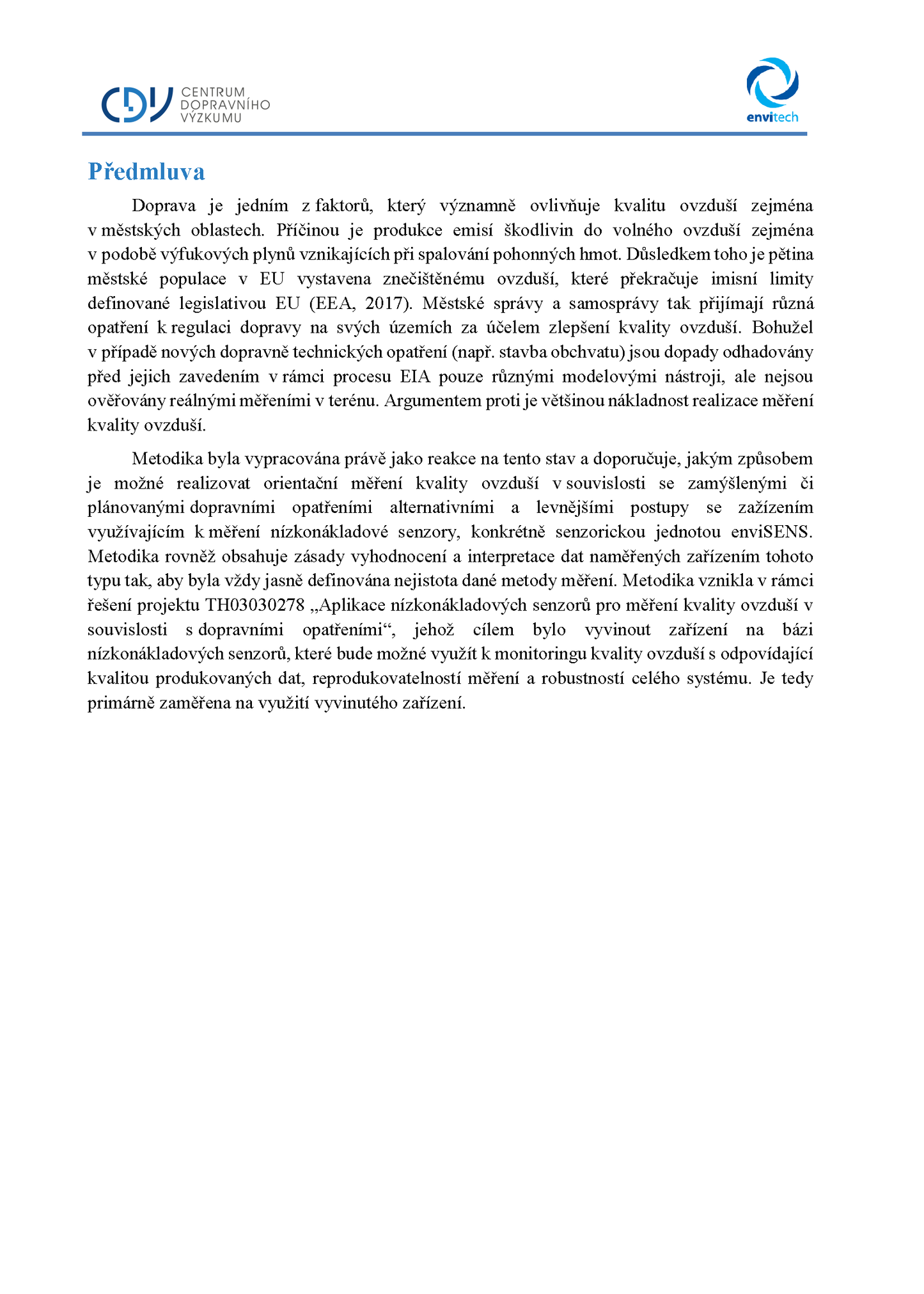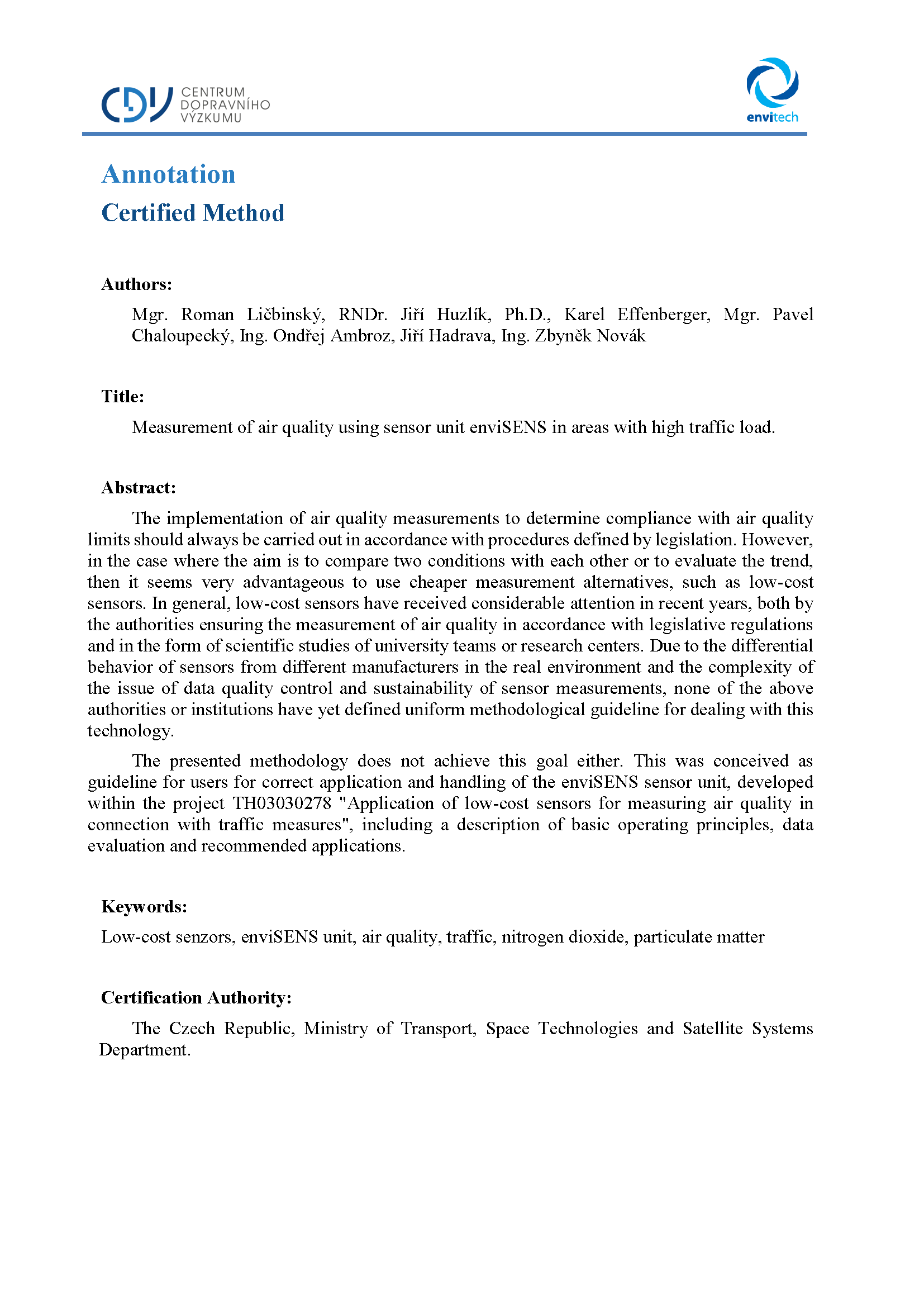E-book
Measurement of air quality with the enviSENS sensor unit in places with high traffic load
Measurement of air quality with the enviSENS sensor unit in places with high traffic load
Couldn't load pickup availability
The methodology was conceived as a way to familiarize the user with the correct application and manipulation of the enviSENS sensor unit, developed as part of the project TH03030278 "Application of low-cost sensors for air quality measurement in connection with transport measures", including a description of the basic principles of operation, data evaluation and recommended applications.







Detail
Author
- Ličbinský R.
- Huzlík J.
- Chaloupecký P.
- Ambrose O.
- Hadrava J.
- Novak Z.
Content
1. Objective of the methodology
2. Introduction
3. Methodological part
3.1. The device and its functions
3.1.1. Technical parameters
3.1.2. Device description
3.1.3. Specifications of the individual components of the enviSENS unit
3.2. Principle of measurement
3.2.1. Gas sensors
3.2.2. Dust sensors
3.3. Measurement procedure
3.3.1. Principles of selection of the measuring site
3.3.2. Measurement with the enviSENS sensory unit
3.4. Evaluation of measured data
3.5. Interpretation of results
3.5.1. Example of comparison of measurement results by reference methods and sensors placed in a functional sample
4. Comparison of the novelty of procedures
5. Description of the application of the certified methodology
6. Economic aspects
Dedication
This methodology was co-financed with the state support of the Technology Agency of the Czech Republic as part of the Epsilon program as part of the project TH03030278 Application of low-cost sensors for measuring air quality in connection with transport measures.
www.tacr.cz
Colophon
ISBN 978-80-88655-28-2
Year of publication
2025






